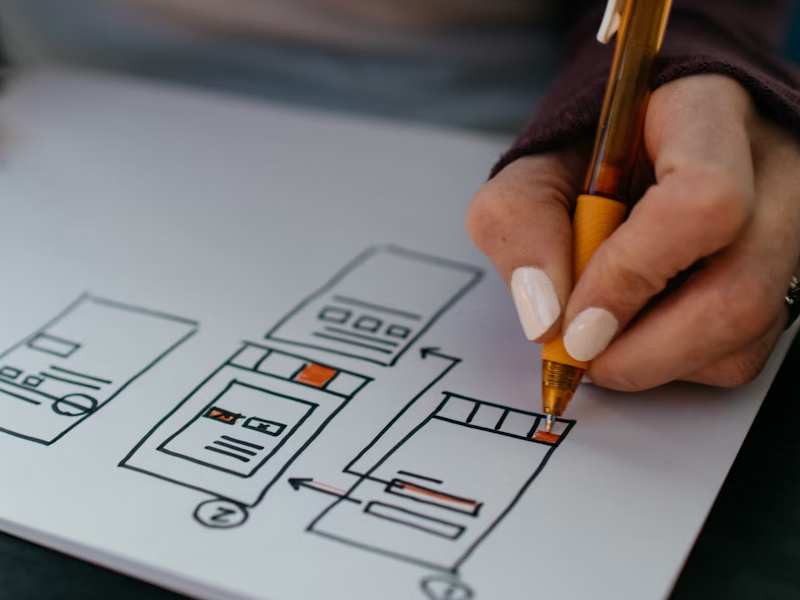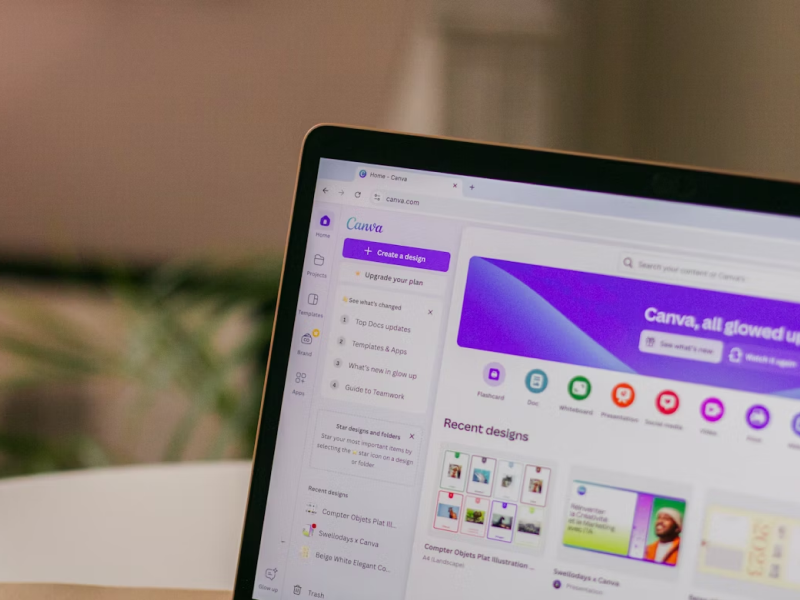Whether we like it or not, the first thing we notice about any type of food in the supermarket, on a web design, or even on an app design is its packaging. This process has been mastered to such a great extent by marketers and designers that we do not even realize how much packaging influences our buyer decisions.
Did you know that as consumers, we only take between 5 and 7 seconds to decide on a purchase decision? That means that designers are faced with the crucial task of capturing customers' attention with packaging in less time than it would take someone to watch a video on TikTok!
Packaging is sometimes more important than the product itself. Throughout history, there have been completely useless or borderline disappointing products that were successful solely because of how they were advertised. After all, almost a third of product decision-making is entirely based on packaging. There are generally four principles of design that we need to take into account in any good packaging:
- Protection
- Attraction
- Information
- Differentiation
All of these aspects are regarded during the design process. Besides making a product attractive on its own, a good UX design will make it stand out among competitors. On an average shopping trip to the local supermarket, we pass through over 40,000 different products. Imagine how easy it is for a product design to fade into the background between a sea of options.
Besides setting it apart from the competition, the design process can also help packaging place the product under a certain niche. Good packaging communicates to the customer what the product's personality is, resulting in a good or bad user experience. For example, the brand Coca-Cola has an incredibly successful history with its product design. Even though there have been multiple redesigns of the bottle, it has always captured the essence of the company. Often referred to as the “perfect liquid wrapper”, the shape of the Coca-Cola bottle is still embraced as one of the most well-known pop-culture references.
The first packaging designs were not linked to advertising - they simply served an informative purpose. The first monumental discovery for packaging came in the late 1700s when lithography allowed people to print in one color on glass, metal, and paper. However, the industrial revolution is responsible for making packaging widely available. It was now easier than ever to mass-produce various types of packaging and distribute it. Still, the design process was very rudimentary and served more functionality than anything else.
More years have passed and one invention that came about right after the Second World War was going to change packaging forever: the era of plastic. From there on came decades of shifting trends in how we interacted with packaging and the way we see and value user experience. They were all reflecting the currents that marked the socio-political climate. They communicated with the public interests and needs. And the rest, as they say, is history.
Advertising healthy food to the wider public has always been a challenge to marketers.
It is safe to say that society’s views and knowledge of what healthy food is have severely changed throughout history. You would be surprised about what people considered to be a healthy meal just years ago! One example of this is the 1970 Pepsi Challenge. This involved drinking one gallon of Pepsi in one hour as a means for the company to promote the drink as a healthy one. The results were horrendous - this challenge resulted in a drastic increase in obesity.
In a recent study performed by Dr. Kathleen Zadoga, it was demonstrated that people are three times more likely to purchase unhealthy foods after watching a food advertisement than compared to reading an article about one. Healthy food is in a constant race against unhealthy food. No matter how much they differ, customers are faced with picking between a healthy option and a less healthy one whenever they enter a supermarket.
But how do designers respond to the eye-catching packaging of their opponents?
If we were to randomly ask people on the street if they wish they had a healthier lifestyle, the answer would most probably be yes. In theory, we should be pretty familiar with what a basic healthy diet would imply: eating foods that are high in nutrients, eating a variety of fruit and vegetables as well, and having plenty of smaller meals throughout the day. There are, however, some obstacles along the way.
According to a 2021 research performed by the Food Foundation Broken Plate, healthy foods were three times more expensive calorie for calorie than unhealthy foods. Moreover, unhealthier meals usually provide high sugar levels and artificial additives that create addiction because they trigger pleasure-inducing neurotransmitters and a better user experience. To top it all, the current packaging for unhealthy products is so effective and productive that is nearly impossible to resist.
The first question we should ask ourselves when we are hunting for healthy food is how do we identify which products are healthy? Designers have been using different principles of design to convey the idea that something is healthy.
1. Buzzwords
The use of buzzwords in marketing is a tale as old as time. Some of these words have been so overused that they have lost their initial meaning. They are usually integrated into packaging design in order to distract the consumer from some not-so-positive dietary traits. Even though, in some cases, these words become redundant and borderline cliche, sometimes they serve as a good means of identifying if the food has positive traits related to health. Some of the most commonly used buzzwords in the healthy food industry are:
- Organic
- Sugar-Free
- All-Natural
- Functional
- Probiotic
- Artificial
- GMO
- Grass-Fed
To be clear, if a brand uses words like this on their packaging, it does not automatically mean they are trying to mislead us. A red flag is raised when healthy products abuse these terms.
2. Thin Packaging
We’ve seen it in granola, low-calorie drinks, protein bars, and many, many others. The main trick when designing thin and shapely packaging is that it emulates the idea of slimness. It has even been scientifically proven through research that consumers associate elongated packaging with the concept of thinness.
Another way in which product designers manipulate packaging to convey the idea of health is by drawing bottles in concave shapes. This is because women were especially found to link this shape to the idea of a small waist.
3. Muted Colors
It is quite rare that we will find healthy foods in bright and obnoxious wrapping. Those are heavily associated with artificial foods, which is a no-go for any food packaging designer. Many researchers also agree with this as it was found that people tend to correlate more muted, paler shades with food that is good for the body.
It is not surprising that when you walk past the “healthy section” in a supermarket, you will be faced with a display of browns, greens, whites, and overall paler colors. A study performed by WebpageFX showed that around 62% of people base their judgment of a food product solely on their color.
It should come as no surprise that green is by far the most popular option for healthy food packaging. It is heavily associated with being fresh, natural, organic, vegetarianism and overall with the concept of well-being.
4. Suggestive Imagery
A picture is worth a thousand words. Adding images to packaging is a universal marketing tool used by product designers. The picture on the wrapping must support the message that the designer wants to transmit to the customers. There are a couple of imagery motives that are frequently used to convey health and trigger a better user experience.
One of them is the use of pictures of nature. For example, chickens on grass fields show us that the eggs we are about to purchase come from happy and healthy animals. Another common instance is stamping images of ripe, beautiful fruits on granola boxes and cereal bars. Designers carefully select pictures that reflect well-being to persuade the customer to choose their product.
5. Transparent or Brown Paper Packaging
A trend that has been on the rise in the last few years is minimalism. This is also present in the healthy food industry in the form of transparent and brown paper packaging.
The idea behind transparent wrapping is simple - it allows consumers to see what is inside without opening the packaging first. This not only sends out the idea of straightforwardness on behalf of the brand but also helps clients set clear expectations for themselves. Brown cardboard or paper is widely considered to be ecological. By using this type of packaging, consumers feel more responsible about their choices, so, a better user experience is created.
There are many other principles of design when it comes to marketing tactics that designers implement in packaging. How do we know which foods are actually healthy and not just advertised to seem that way?
- Read the ingredient list;
- Determine how long the ingredient list is;
- Look at the expiration date;
- Mind your surroundings in the supermarket;
- Look for 100%
- Check the levels of sugar;
- Avoid pre-made meals;
- Follow trustworthy news outlets on this subject;
We at uinkits understand the importance of inputs in great user experiences and creating amazing UI designs. That’s why we’ve developed a Figma UI Kit with design components that include these essential UI elements that enable you to design intuitive and user-friendly interfaces effortlessly.
“You press the button, we do the rest,” – Kodak.
Inspired by this iconic tagline from Kodak, we believe in simplifying the design process for you. Our Figma UI Kit, uinkits, is a complete design system with UI components that allows you, as a UI UX designer, to create your products as quickly as pressing a button.
Our design system components, including variables, cards, buttons, and everything you need for your design process. All you have to do is take your UI design component needed, and you’re ready to use it in your designs!








